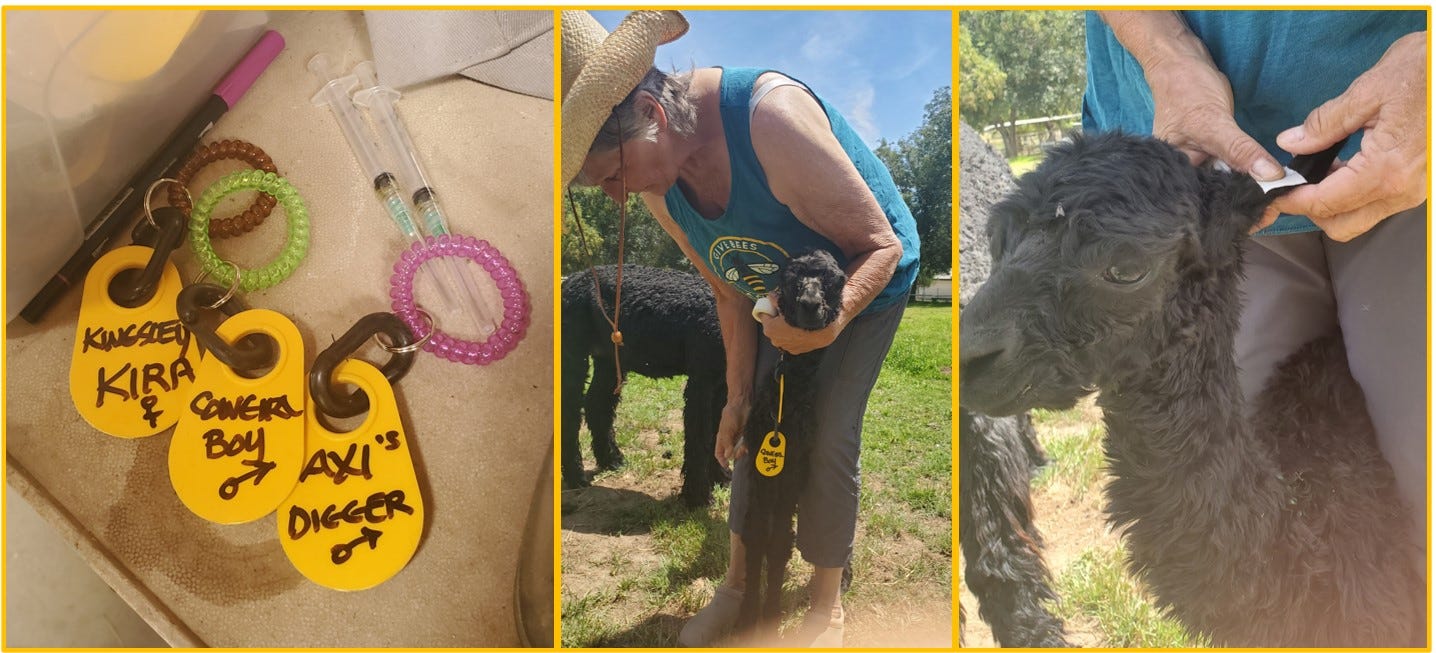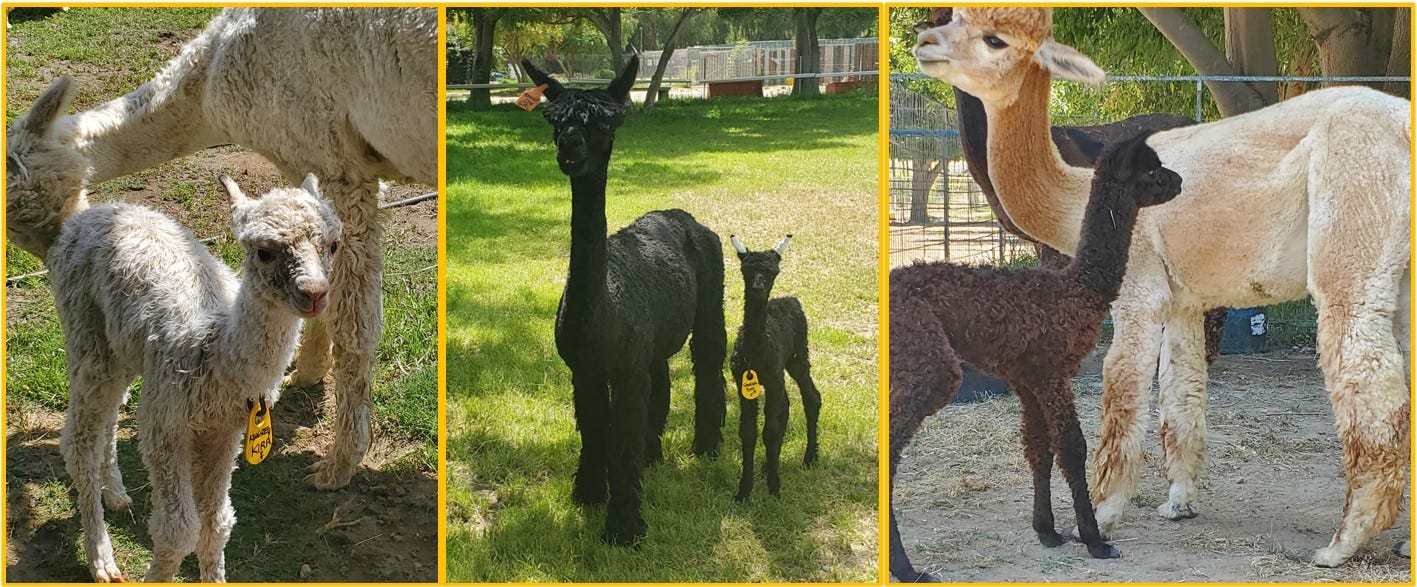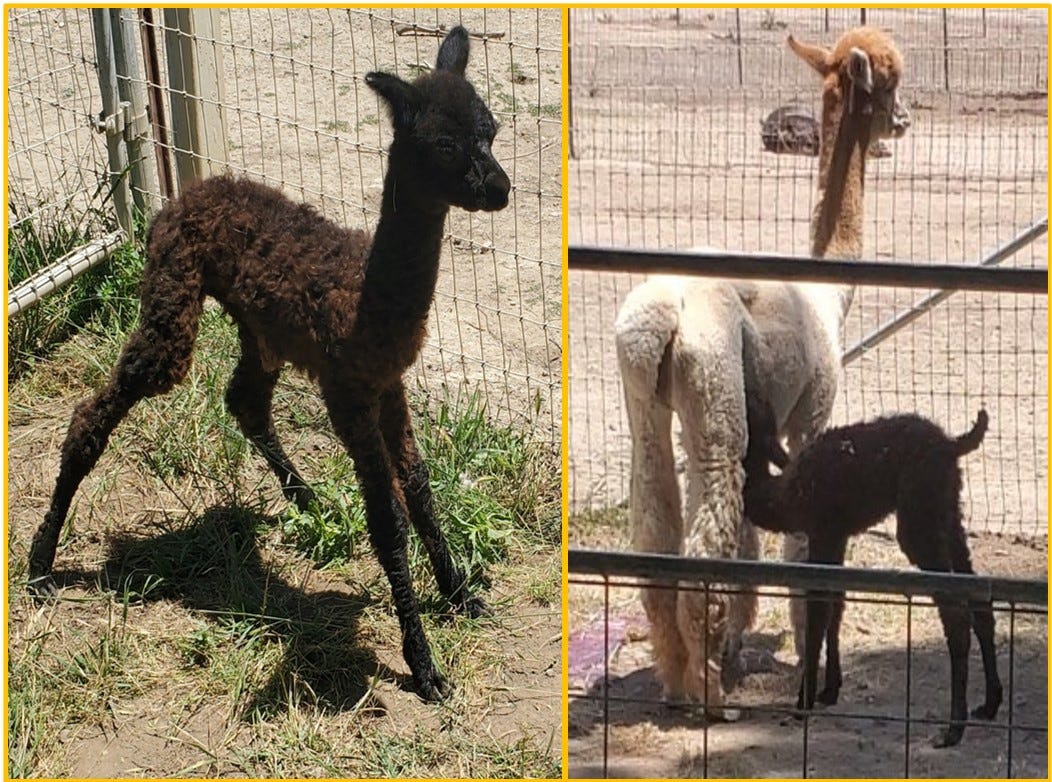When I arrived, I laid eyes on the newest addition at the Alpacas at Windy Hill ranch. Dizzy Dig Deep (nicknamed Digger) was born less than 3 hours earlier to first-time mom Axi (aka Axis of Symmetry). Both mom & cria were isolated in a small pen adjacent to a larger field holding a dozen or so pregnant alpacas & the two other new moms with their crias.
Digger's on His Way! (video from Don, the Alpacas at Windy Hill ranch manager)
During the birth, the rest of the alpacas gathered around Axi. Once the cria was born, the other alpacas continued to gather around to take a look & sniff the new cria from one end to the other. I observed they continued to do so off-&-on for the rest of the day, as if getting to know & welcoming the new kid-in-the pasture.
Within an hour of my arrival, Digger took some of his first steps and shortly thereafter took his first suckle (with a little help from Cindy, owner of Alpacas at Windy Hill).
By the end of the day, Digger wanders into the bigger field for the first time & finds his mom. Digger finds Mom in the Big field (video link)
Meet the New Crias
All 3 new crias got an A-D vitamin shot & name tag. Sometimes 1 or both of a cria's ears are turned inside-out, so the ears need to be folded the correct way (looking sort-of like a hard-shell taco fold) & taped for a couple days. Because their ears are so flexible early on, it's easy to correct the ear fold if it happens. Today, Kira had her ear tape removed & Cowgirl's boy got both his ears taped (at least for the next 2-3 days).


A Western Skink Surfaces
Cindy prepped the new crias’ A&D vitamin shots & name tags in the barn. While walking from the barn back to the crias’ field l spotted a lizard with a bright blue tail! Neither Cindy or I had ever seen one before. One never knows the full abundance of life living in the topsoil just under our feet! The more I learn out what lives in soil, the more blown away I am.

Per wikipedia, young western skinks have a bright blue tail with color that fades with age. Males turn orange on the underside when they are breeding. Females lay 2–6 eggs during June and July. Western skink females construct nest chambers that are several centimeters deep in loose moist soil. Typically these chambers are located under surface objects, especially flat stones, logs, and sometimes in or near rock outcrops. Young western skinks probably hatch in late summer, and sexual maturity may occur at 2 years of age, but most individuals probably do not reproduce until they are 3 years old. Western skinks can reach an age of up to 10 years. Skinks are primarily eat small invertebrates including spiders, a variety of insects and sow bugs. Crickets, beetles, moths, grasshoppers, and other arthropods have been found in the stomachs of skinks. Skink video
Stay tuned for next week’s New Crias Report!




